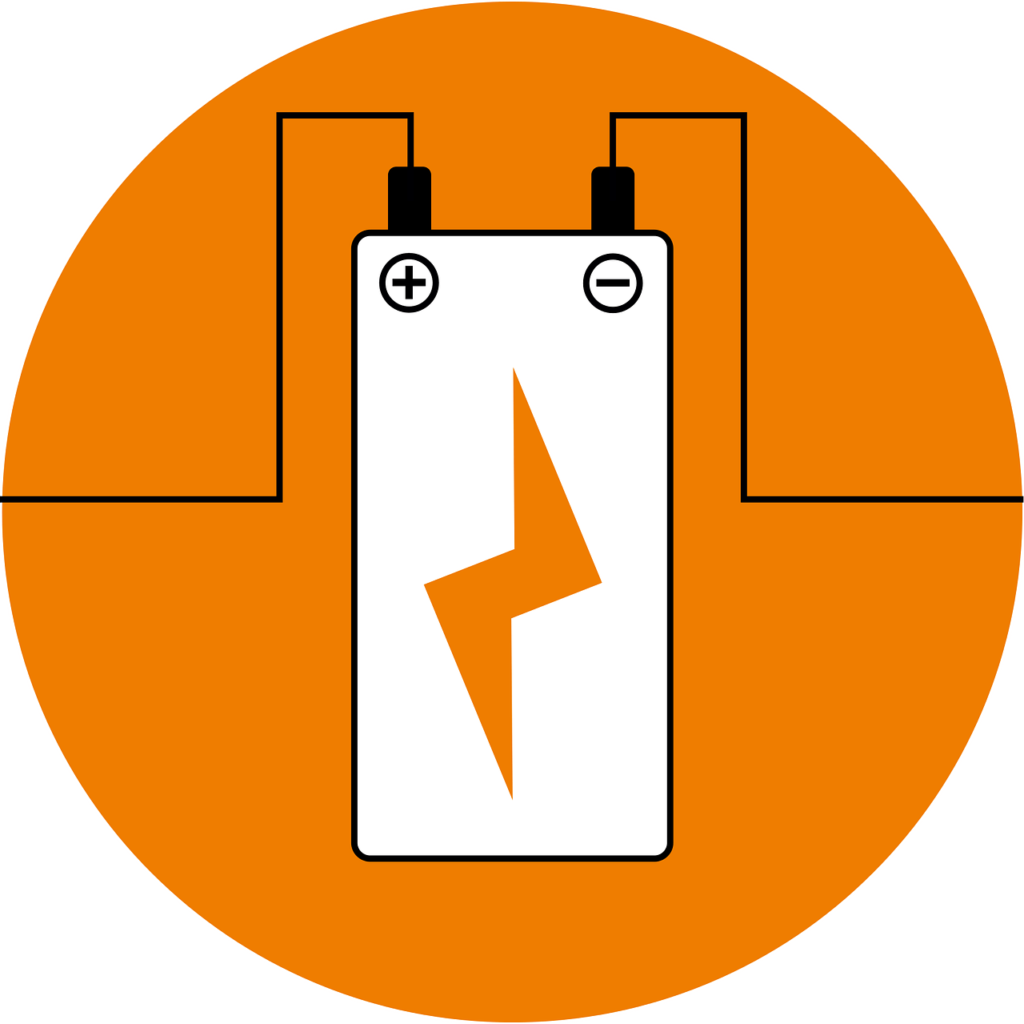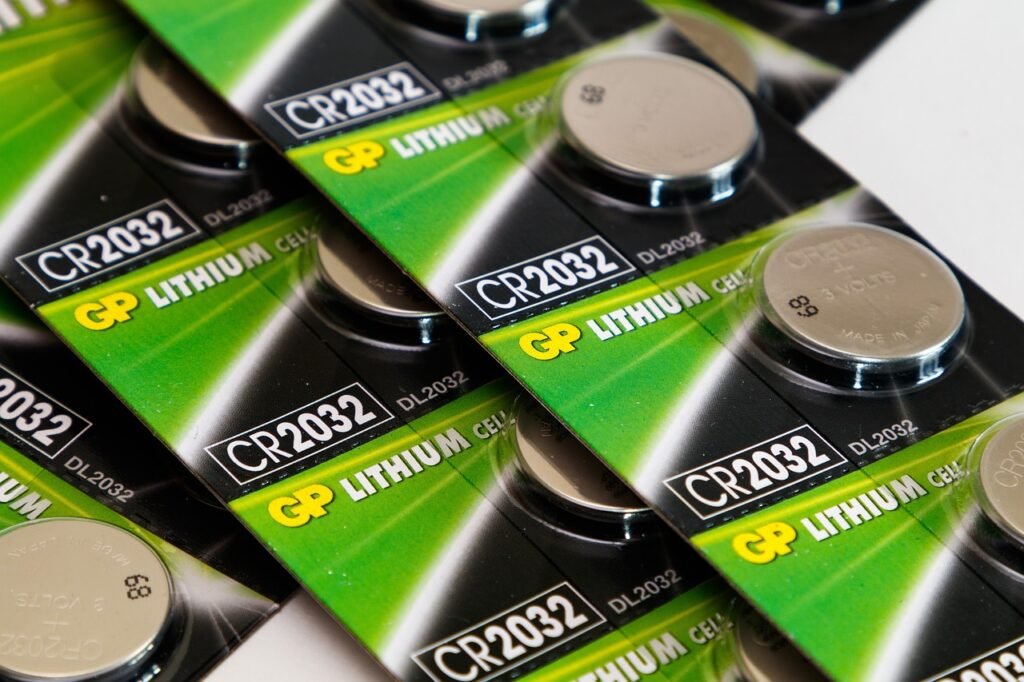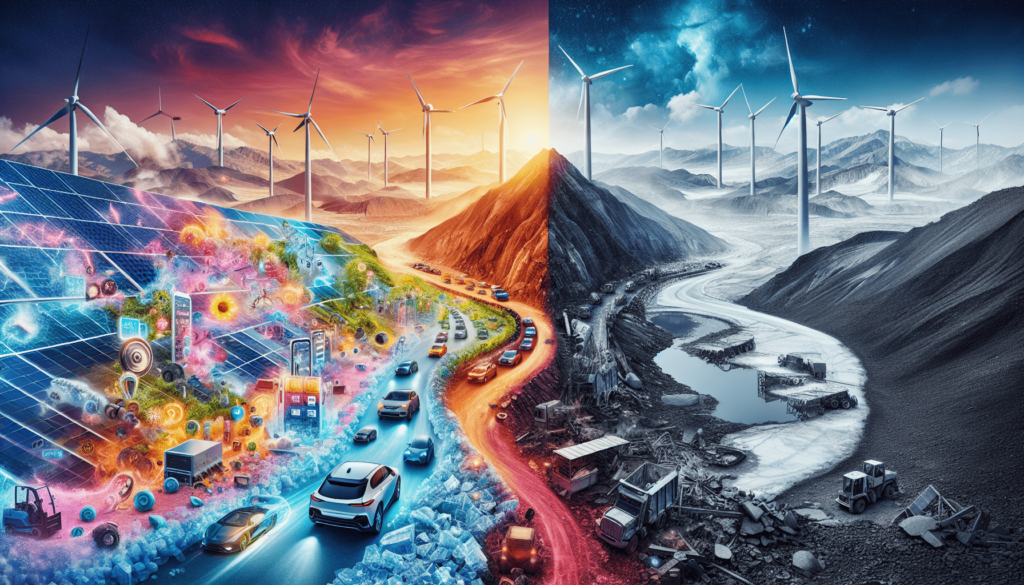Imagine you’re about to sip your morning coffee, scrolling through headlines, and you stumble across something about lithium extraction. You might think, “Isn’t that what powers my phone and laptop?” Indeed, it does. But what’s often overlooked is the environmental toll it takes to bring those conveniences into our lives. The extraction of lithium, essential for powering our gadgets and electric vehicles, has raised significant environmental concerns. From water scarcity to habitat destruction, the journey from beneath the earth to your electronic device is more controversial than you might realize. Let’s unpack the environmental impact of lithium extraction and find out if it’s as green as we hope.

Overview of Lithium Extraction
Methods of lithium extraction
You might be curious about how lithium, a crucial element in our batteries and gadgets, is extracted. Well, there are primarily two ways to get lithium out of the earth. The first method involves mining hard rock, usually spodumene, and then processing it to extract lithium. The second, and increasingly popular method, involves pumping underground brine to the surface and letting the water evaporate, leaving behind concentrated lithium which can then be processed. Each of these methods has its own environmental impacts and efficiencies, and the choice of method largely depends on where the lithium is located.
Geographical locations of major lithium reserves
You’ve likely heard of the “Lithium Triangle” – this isn’t a mystery novel plot, but rather an area spanning parts of Bolivia, Chile, and Argentina, home to over half of the world’s lithium reserves. Other significant reserves are found in Australia, China, and the United States. These geographical variances mean the extraction practices are as diverse as the cultures and ecosystems surrounding them, leading to unique challenges and environmental impacts at each site.
The role of lithium in modern technology
In case you’re wondering why there’s such a fuss about lithium, it’s because it’s a key component in lithium-ion batteries, which power everything from your smartphone and laptop to electric vehicles (EVs). Its ability to store substantial energy makes it indispensable in our push for cleaner, renewable energy solutions. As our reliance on these technologies grows, so does the demand for lithium, making its extraction even more relevant today.
The Environmental Impact of Mining Lithium
Landscape disruption and habitat loss
When you imagine a lithium mine, think of large, open pits or vast evaporation ponds. These structures fundamentally alter landscapes, resulting in habitat loss for wildlife and disruption of natural areas. The transformation from untouched land to industrial site can have significant ecological ramifications, impacting local flora and fauna.
Soil degradation and contamination
Potentially, the most immediate effect of lithium mining on the environment is soil degradation. The process can lead to contamination from chemicals used in the extraction process, making the soil less fertile and disrupting the land’s natural integrity. This degradation not only affects plant life but also the animals and humans who rely on it.
Water usage and contamination
Extraction of lithium, especially from brine, requires massive amounts of water. In areas already facing water scarcity, this added pressure can deplete local water supplies, affecting both the environment and the communities living nearby. Additionally, the process can lead to contamination of water sources with chemicals or salts, posing risks to aquatic life and drinking water quality.
Air pollution and greenhouse gas emissions
Though not immediately obvious, lithium mining and processing contribute to air pollution and greenhouse gas emissions. The use of fossil fuels in mining operations and transportation of materials can release significant amounts of carbon dioxide, exacerbating climate change challenges.
Water Resources and Lithium Extraction
Impact on local water tables
Imagine a scenario where water levels in your local wells suddenly drop because nearby lithium mining operations use up all the groundwater. This isn’t just a hypothetical; it’s a reality in some lithium-rich regions. The intensive water use can lead to decreased water availability for agriculture, wildlife, and human consumption.
Pollution of water bodies
You might also be concerned about the quality of your water. Lithium mining can introduce toxic chemicals into local water bodies, affecting the health of ecosystems and posing risks to communities relying on these sources for drinking, irrigation, and recreation.
Water management solutions in lithium mining
But it’s not all doom and gloom. Advances in technology and responsible mining practices are emerging to address these challenges. Water recycling, better waste management, and minimal water-use technologies are being developed and implemented to reduce the environmental footprint of lithium extraction.
Impact on Biodiversity
Species at risk due to lithium mining
Imagine birds, fish, and mammals losing their homes or suffering from contamination due to lithium extraction activities. Unfortunately, this is not just imagination but reality for some species living in or near lithium-rich areas. The disruption of habitats and ecosystems can put local biodiversity at risk, threatening the survival of some species.
Disruption of ecosystems
It’s like pulling a thread from a fabric; lithium mining can unravel the intricate web of life that constitutes an ecosystem. The removal or alteration of one species affects the entire food chain and ecosystem dynamics, potentially leading to unforeseen environmental impacts.
Conservation efforts and mining regulations
However, hope is not lost. Many countries and companies are increasingly aware of the need to protect biodiversity. Efforts are underway, including the establishment of regulations that require environmental assessments and mitigation strategies, as well as conservation initiatives aimed at preserving natural habitats and endangered species.

Chemical Pollution from Lithium Extraction
Types of chemicals used in lithium mining
During lithium extraction, especially from hard rock, various chemicals are used to separate lithium from the mined material. These chemicals, if not managed properly, can be hazardous to the environment, causing contamination and posing risks to wildlife and human health.
Risks of chemical spills and leaks
You’ve probably seen news about industrial accidents involving chemical spills. Such incidents can also occur in lithium mining, leading to contamination of soil and water, and immediate and long-term ecological damage. Preventing such spills, and managing them when they do happen, is a significant challenge for the industry.
Mitigating chemical pollution in the environment
Thankfully, modern mining operations increasingly emphasize sustainable practices, including safer chemical management, spill prevention measures, and cleanup protocols. By investing in these areas, the lithium mining industry can reduce its environmental footprint and safeguard ecosystems.
Socio-economic Effects of Lithium Extraction
Impact on local communities
For communities living near lithium mining sites, the industry can be a double-edged sword. On one hand, mining operations may offer employment opportunities and contribute to local economies. On the other, the environmental impacts mentioned earlier can adversely affect the quality of life and health of local populations.
Economic benefits vs environmental costs
You might be wondering, is it all worth it? The economic benefits of lithium mining, including job creation and revenue generation, need to be weighed against the environmental and social costs. This delicate balance is at the heart of the debate on sustainable mining practices.
Employment opportunities and challenges
Lithium mining can be a significant source of employment, offering new opportunities for many. However, ensuring that these opportunities are accessible to local communities and do not come at the expense of environmental degradation or social inequality is a complex challenge that requires thoughtful approaches and policies.

Sustainable and Ethical Lithium Mining
Innovations in environmentally friendly mining techniques
Imagine a world where mining doesn’t mean destroying ecosystems but coexisting with them. Innovations such as less invasive extraction methods, better waste management, and water conservation techniques are making this increasingly possible. As technology evolves, the hope for more sustainable and less intrusive lithium mining practices grows.
Certification and regulation of ethical mining practices
You’ve likely heard of fair-trade coffee or ethical clothing brands. Similar certification schemes for ethically mined lithium, which consider environmental and social impacts, are being developed. These certifications, alongside stringent regulations, can help ensure that lithium mining adheres to the highest standards of sustainability and ethics.
The importance of recycling lithium batteries
One of the most crucial aspects of sustainable lithium use isn’t just about how it’s mined, but also about what happens at the end of its life. Recycling lithium batteries can significantly reduce the demand for freshly mined lithium, lessen environmental impacts, and conserve natural resources. As battery technologies advance, improving recycling processes and rates becomes increasingly important.
Global Demand for Lithium and Environmental Implications
The surge in lithium demand and its drivers
You’re probably aware that the demand for lithium has skyrocketed, primarily driven by the booming electric vehicle (EV) market and the global shift towards renewable energy storage. This growing demand puts pressure on lithium extraction industries, intensifying the environmental challenges associated with mining.
Projected impacts of increased lithium mining
As you might expect, increased lithium mining to meet this demand could lead to more significant environmental degradation if not managed responsibly. This includes intensified landscape disruption, water and chemical pollution, and threats to biodiversity. The need for sustainable mining practices has never been more critical.
International efforts to mitigate environmental damage
Fortunately, countries and international bodies are recognizing these challenges. Initiatives aimed at encouraging sustainable mining practices, improving regulations, and fostering global cooperation are underway. These efforts are crucial in mitigating the environmental impacts of the growing lithium industry and ensuring a sustainable future for this vital resource.

Alternative Sources of Lithium
Lithium from geothermal brines
You might find it fascinating that lithium can be extracted from the earth’s heat. Geothermal brine, a by-product of geothermal energy production, is emerging as a potential source of lithium. This method could offer a more sustainable alternative to traditional mining, with a smaller environmental footprint.
Seawater extraction of lithium
The idea of extracting lithium from seawater might sound like science fiction, but it’s becoming increasingly feasible with advancements in technology. Though currently more expensive than conventional methods, seawater extraction has the potential to provide an almost limitless source of lithium with minimal environmental impact.
Recycling as an alternative source
Recycling used lithium batteries is possibly the most sustainable source of lithium. It not only reduces the need for new mining but also tackles the growing issue of battery waste. With advancements in recycling technologies, reclaiming lithium from old batteries could become a significant and environmentally friendly supply source.
The Future of Lithium Extraction
Advancements in extraction technology
As you look towards the future, expect to see continued innovations in lithium extraction technology. These advancements aim to make the process more efficient, less environmentally damaging, and more socially responsible. From reducing water usage to minimizing chemical pollution, the goal is to harmonize lithium’s critical role in our technologies with the health of our planet.
The potential for reduced environmental impact
With the right investments in research and development, and a commitment to sustainable practices, the future of lithium extraction could see a significant reduction in its environmental impact. This would not only ensure the continued availability of this essential resource but also protect the ecosystems and communities surrounding lithium reserves.
Balancing technological needs with environmental protection
As we move forward, the challenge lies in balancing our technological advancements and environmental responsibilities. Lithium, while essential for our transition to renewable energy, presents us with a complex set of environmental challenges. By focusing on sustainable extraction methods, promoting recycling, and seeking alternative sources, we can work towards a future where our technological needs do not come at the cost of the planet’s health. With concerted effort and collaboration, achieving this balance is within our reach, ensuring a greener and more sustainable future for all.
